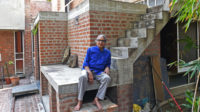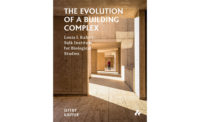Our captivation by the Democratic People’s Republic of Korea (aka North Korea) may rely in part on our not having seen what it looks like. In 2016, London-based architecture and design critic for the Guardian Oliver Wainwright was invited to the capital, Pyongyang, with other journalists and has now produced a volume of his photographs and texts, in English, German, and French, focused mainly on the city. The tantalizing compendium provides a snapshot of a “reclusive country in all its kaleidoscopic color,” including lavish interiors he describes as “fascinating stage sets.”
Pyongyang was entirely rebuilt under the leadership of the Eternal President Kim Il Sung following the city’s destruction by U.S. bombing during the Korean War. When Pyongyang was replanned, a Moscow-trained architect named Kim Jong Hui left 25 percent of Pyongyang devoted to buildings. The rest emulated aspects of early modern Western urban planning—with gardens, long axes, and expansive squares (along with easy access for the military).
From 1953 to his death in 1994, Kim Il Sung was invested in using architecture as a means of communicating power and to help define a state ideology of self-reliance. Successors to his rule, son Kim Jong Il and grandson Kim Jong Un, have followed suit. Such works as the quietly neoclassical Moranbong Theatre of 1954 or the Kamsusan Assembly Hall of 1977—later converted into a mausoleum for Kim Il Sung—are contrasted with muscular stadia, monumental squares, and bulky housing blocks, supplemented by polychrome interiors of theaters and gleaming hotel lobbies.
Wainwright has organized his exceptional, sometimes haunting photographic documentation of this “socialist fairyland” around six key sections: views of the city as a whole and housing in particular; monuments; museums and arts facilities; sports and education buildings; leisure and hospitality structures; and the stations of the Pyongyang Metro. While the journalist was not granted access to most areas outside Pyongyang, he includes a few visual surprises, such as the curvaceous Changgwang Hotel and Recreation Complex (1980) along the Pothong River.
Yet we cannot escape the overt political nature of North Korea’s built environment. In addition to the glimmers of hyperbolic color found amid Pyongyang’s bold public buildings, the images in this handsome volume reveal a city and country in which architecture signals its own kind of ceaseless expression of power.




